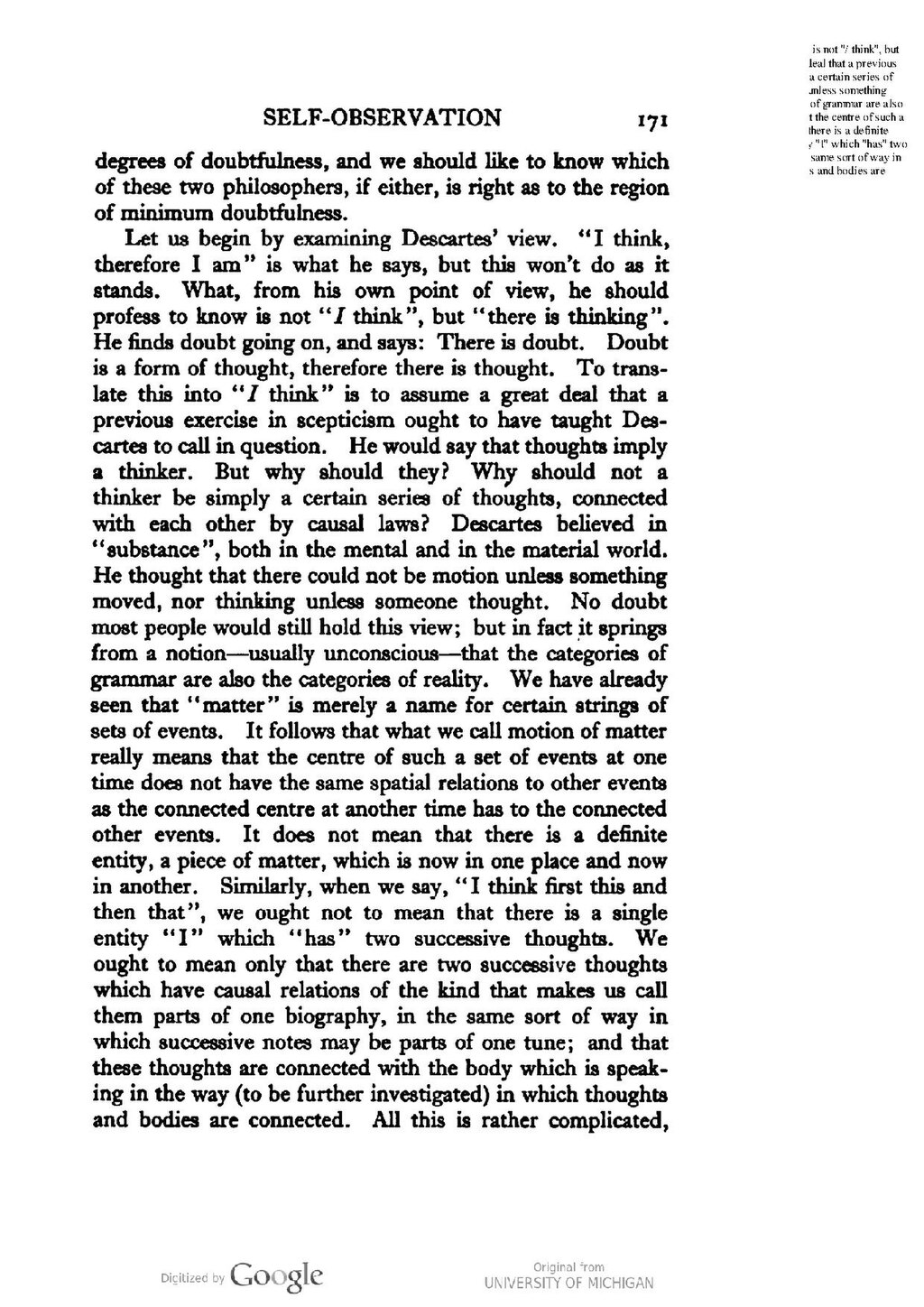degrees of doubtfulness, and we should like to know which of these two philosophers, if either, is right as to the region of minimum doubtfulness.
Let us begin by examining Descartes' view. "I think, therefore I am" is what he says, but this won't do as it stands. What, from his own point of view, he should profess to know is not "I think", but"there is thinking". He finds doubt going on, and says: There is doubt. Doubt is a form of thought, therefore there is thought. To trans late this into "I think" is to assume a great deal that a previous exercise in scepticism ought to have taught Descartes to call in question. He would say that thoughts imply a thinker. But why should they? Why should not a thinker be simply a certain series of thoughts, connected with each other by causal laws? Descartes believed in "substance", both in the mental and in the material world. He thought that there could not be motion unless something moved, nor thinking unless someone thought. No doubt most people would still hold this view; but in fact it springs from a notion—usually unconscious—that the categories of grammar are also the categories of reality. We have already seen that "matter" is merely a name for certain strings of sets of events. It follows that what we call motion of matter really means that the centre of such a set of events at one time does not have the same spatial relations to other events as the connected centre at another time has to the connected other events. It does not mean that there is a definite entity, a piece of matter, which is now in one place and now in another. Similarly, when we say, "I think first this and then that", we ought not to mean that there is a single entity "I" which "has" two successive thoughts. We ought to mean only that there are two successive thoughts which have causal relations of the kind that makes us call them parts of one biography, in the same sort of way in which successive notes may be parts of one tune; and that these thoughts are connected with the body which is speaking in the way (to be further investigated) in which thoughts and bodies are connected. All this is rather complicated,
